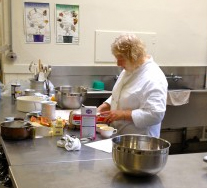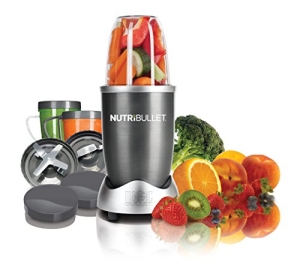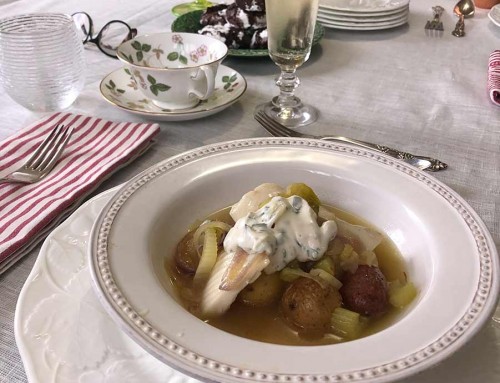Class # 2 – Paella

I took a survey of students prior to the class to see what folks wanted to learn. Many people said they wanted to learn more about seafood so I chose Paella as our topic since it would allow me an opportunity to discuss many food related things since there are so many ingredients in Paella. Paella is a real crowd pleaser! You can customize depending on your tastes, you can make it vegetarian, vegan, with meat, without meat, all seafood, or a little bit of everything. It’s an old school one pot dish that makes enough to feed a crowd.
Regarding the ingredients this recipe gave me an opportunity to discuss seafood, and the Monterey Bay Aquarium Seafood watch, we were able to talk about rice and the flavor and texture differences of rice, and I used this recipe as a vehicle to encourage my students to use leeks and fennel more in their cooking. Lastly it gave me an excuse to talk about Spanish Table, one of my favorite specialty food and equipment shops in Berkeley.
I made Orange Granita to serve for dessert. We only have 100 minutes in class so I made the granita at home since it needs several hours to freeze. I love serving a cold crisp granita for dessert as a follow up to Paella. Paella is a rich complex dish and the fruity icy coldness lends balance to the meal.
Paella Base
1 T olive oil
1 white onion, peeled and sliced
1 large leek, sliced-white part only
1 bulb fennel, sliced
1 clove garlic, peeled and slivered
2 bell peppers (your choice of color), sliced thin
2 t smoked paprika
2 C rice (I prefer Basmati, but any rice will do)
2 C stock (vegetable stock if you are a vegetarian, chicken stock if not, or clam juice if you LOVE seafood)
2 C crushed tomatoes
Pinch saffron
Salt and pepper to taste
Vegetarian Version
1 large can garbanzo beans, drained and rinsed
Meat Version
Olive oil, salt and pepper
6 chicken thigh’s
1 Linguica sausage, sliced thin
½ pound salmon, cut into one inch cubes
½ pound shrimp in the shell, deveined
Toppings for both versions:
1 C peas
¼ C chopped Italian Parsley
For the Base
If you are making the meat version season the chicken with olive oil, salt, and pepper, set aside. Place a large skillet on a high heat, once the pan is hot drizzle with olive oil and brown the chicken on both sides. Remove the chicken from the pan and set aside.
For both versions, add the olive oil, onions, leeks, fennel, and peppers to the pan. Sautee until the vegetables are wilted and slightly caramelized. While the vegetables are cooking combine the stock and tomato sauce and stir the pinch of saffron in the liquid so that the saffron releases its flavor. Add the smoked paprika and rice to the vegetables and sauté until the rice is evenly coated with the contents of the pan. Add the liquid and stir to combine.
For the meat version return the chicken thigh’s to the pan and add the Linguica and stir to combine. Cover and let simmer 10 minutes. After 10 minutes add the salmon and shrimp and cover again for an additional 10 minutes or until the seafood is cooked through.
For the vegetarian version add the garbanzo beans, cover and let simmer 15-20 minutes until the rice is cooked through.
For both versions add the peas and chopped parsley. Cover and let sit with the heat turned off for about 5 to 10 minutes. This allows all the flavors to meld and keeps the meats/seafood moist.
Roasted Red Pepper Sauce
1 red pepper roasted, peeled, and coarsely chopped
1 garlic clove
1 C olive oil
Juice of one lemon
½ t smoked paprika
Salt and pepper to taste
Combine all ingredients in a food processor or blender and process until smooth.
To serve spoon pepper sauce over the Paella.
Serves 6-8
Orange Granita
6 oranges
2 C orange juice
1/3 C simple syrup*
2 T orange liqueur
Wash the oranges. Using a microplaner zest three of the oranges. Juice all six oranges and combine with the orange juice and zest. Sweeten to taste with simple syrup (you can use no simple syrup at all if you’re happy with how the mixture tastes). Add the liqueur. Place the mixture in a shallow roasting pan and place in the freezer. After two hours scrape a fork over the mixture to break up the freezing process so that it kind of looks like shaved ice. Return to the freezer and scrape again in another couple of hours. Serve immediately. I like to top mine with a dollop of whipped cream or Greek yogurt.
If you want to make this ahead you will need to scrape it again to break it up, it will freeze into a solid mass, and it loses its delicate flavor within about 48 hours.
Serves 6
*Simple Syrup
Simple syrup is a mixture of boiling water and sugar. The reason why you use it in this dish is if you added granular sugar to the juice mix the sugar wouldn’t dissolve. You can also flavor simple syrups with a vanilla bean, or cinnamon stick which can add an interesting twist to your granita.
½ C boiling water
½ C sugar
Combine the boiling water and sugar and stir until the sugar is dissolved. You can use immediately in the granita, if you have any leftover store in the fridge. It’s a good way to sweeten cocktails like Lemon Drops or Cosmopolitans.
Class # 3- Juicing and Raw Vegetable Salads

Since the title of the class is Food for Health and Pleasure I decided I should probably devote at least one class to the “health” part. I was telling the class I’m thinking one for health and then three for pleasure? That’s about right…right? We have two classes devoted to nutrition and one to mindful eating, so that should balance out the classes on chocolate and pizza…right?
My dirty little secret is, I love juicing. If I had counter space I’d keep my juicer set up and juice a lot. I don’t like sweet beverages, but I do get tired of drinking water, and sometimes I just feel like I’m not getting enough vegetables or that my body isn’t balanced, so I throw a juice together.
Juicing is a term used for two different types of drinks. Juicing is really juice extracting. Using a machine to extract the juice from the pulp and the pulp gets thrown into a hopper, making lovely compost.
The kind of juicing where you throw a bunch of vegetables and fruit into a blender with some liquid is really making a smoothie. It can be an all-vegetable smoothie, which is the kind I typically make. Several students in their surveys mentioned that they didn’t like vegetables and wanted tips for getting more into their diet and juicing/smoothie making is a good way to accomplish that. I also wanted to invite students to think outside the box a bit by tasting an all-vegetable smoothie. All of the students save one gamely tasted it. Can’t say that any of them will be drinking it again, but I tried. The bigger hit was the juice which was a mixture of sweet vegetables, carrots, beets, fennel, green apple. The beets give it such a lovely color. It’s much more appetizing to eat something with a rosy blush than something that is a bright green color.
After we sampled the juices we made three raw salads and briefly discussed the raw food movement. One of the salads was another version of the zucchini salad that is already on this blog. The other two are ones I have made in the past. One is a shredded butternut squash salad that is a Tyler Florence recipe and the last is a raw lentil salad that’s pretty and satisfying. In my opinion salads like these do not improve with age and should be eaten the day they are made. Part of their appeal is their crisp clean flavors.
We also used class time to taste olive oils and vinegars. I wanted the class to taste the difference between an imported olive oil and a domestic one, and to discuss the health properties of vinegars. I brought in a couple of the balsamic vinegars from Marisolio, the Espresso Balsamic because I think it has such an interesting flavor and the Lemon Grass Mint because I love to splash it in my vegetable smoothie.
All your juicing ingredients should be icy cold, they taste better that way.
Vegetable Smoothie
Coconut Water
2-3 handsful of kale slaw (shredded kale with bits of carrots and cabbage sold at Whole Foods)
1 slice peeled avocado
½ a peeled cucumber
Sliver of lemon
Splash of Lemongrass Mint Balsamic Vinegar
Pinch sea salt
I have the super-duper bullet that I use for this, I love it. Place the kale slaw, avocado, cucumber, and sliver of lemon in a blending jar, add as much coconut water as you want, add a splash of vinegar and pinch of salt and blend away. Think of it as a kind of gazpacho, it’s more savory than sweet.
Sweet Vegetable Juice
Beets
Carrots
Fennel
Green Apple
Wash everything well and process through the juicer as per the manufacturers directions. One beet, two carrots, ½ bulb fennel, and one apple will make a large glass of juice.
Zucchini Noodle Salad
4 large zucchini washed, stemmed end removed
1 pound Romano beans, trimmed, cut into 1/2 inch pieces, blanched and cooked
1/4 C chopped toasted pistachio nuts, chopped
2 oz crumbled feta cheese
salt and pepper to taste
Dressing
1 shallot, peeled
1 clove garlic, peeled
1 t Dijon style mustard
juice and zest of one lemon
2 t balsamic vinegar
2 T mayonnaise
1/2 C extra virgin olive oil
1 t salt
1/4 t pepper
5 large leaves of fresh mint
In a blender or bullet combine all the dressing ingredients, process until blended, set aside.
Shred the zucchini into long noodles and place in a medium bowl. Add the Romano beans and about half of the dressing. Using tongs mix to combine, taste to see if you need more dressing. Add more dressing if needed and season to taste with salt and pepper. Arrange salad on a serving bowl and top with a crumbled feta and chopped pistachios.
I like this salad best at room temperature, but you can chill it and serve it later. If you’re serving it later wait until you serve it to add the cheese and pistachios. The pistachios lose their crunch once chilled.
Serves 6-8
Raw Ginger Lentil Salad
1 C red lentils
1 corn cob (if corn is in season, if not use another vegetable)
2 green onions, sliced
1 carrot shredded
¼ C almond oil
½ t chopped fresh ginger
1 T apple cider vinegar
Place the lentils in a jar and cover with cold water. Allow the lentils to soak overnight. Drain and set aside. Cut the corn kernels off the cob of corn, add to the lentils, add the green onions and shredded carrot. In a small bowl whisk oil, ginger, and vinegar. Season to taste with salt and pepper and serve.
Serves 4 as a side dish
Class #4 Pizza

Pizza was something else that came up on the survey’s so I wanted to include it not only for learning how to make pizza but also touching on how to make yeast dough. The secret to good dough is to have it as soft as possible and the only way to understand what that means is to actually see it and feel it. For this class I made overnight dough, and two quick dough’s, one wheat and one white. I wanted everyone to taste the difference in the dough’s and to see the difference in texture. I also brought two kinds of mozzarella, one from a smaller cottage vendor and one that is produced in larger quantities so that we could compare the differences in the cheeses. Everyone really got their hands in it during this class, there was plenty of dough to go around and lots of pizza’s to make. In the end I’m not sure we had a clear winner, some liked the overnight dough better, and others liked the quick dough better, same for the cheeses. It really depends on what defines pizza for you. I like really thin crusts with lots of big bubbles in it and the creamy texture of a small batch mozzarella. But others prefer the thicker bread-like dough of the quick crust and the stronger flavor of the large batch mozzarella. I think everyone liked the caramelized onion whole wheat pizza.
Pizza Dough
Classic Dough
Sponge
½ C lukewarm water
½ envelope dried yeast
½ C flour
Dough
¾ C lukewarm water
1 t sea salt
½ envelope dried yeast
3 C flour
Olive oil
Cornmeal
For the sponge, place the water, yeast, and pinch of flour in a large bowl and let rest until the yeast dissolves and starts to bubble. Whisk in the remaining flour. Cover the mixture and let sit overnight. The next day add the water, salt, and yeast to the sponge. Slowly add the flour, either mixing by hand or with a dough hook. Knead the dough until it is soft and elastic. Brush bowl with olive oil and place dough in bowl, cover and chill for 6 hours, punching down every couple of hours as it rises. Remove the dough from the fridge about 1.5 hours before you plan on using it.
Remove the dough from the bowl onto a floured surface. Flatten the dough with your hands, gently turn and pull the dough until you have a large round, or several individual sized rounds (about 4 9-inch rounds).
Quick Dough
¾ C warm water
2 T sugar
1 t instant yeast
1 T Kosher salt
1 T olive oil
2 C flour (maybe more or less)
In a medium bowl combine water, sugar and yeast and allow the yeast to proof. Add salt, olive oil, and flour a bit at a time and knead until you have a soft, elastic dough. Allow the dough to rest 30 minutes and shape into a pizza round. Continue with cooking directions.
Whole Wheat Dough
1 ½ C warm water
1 t sugar
1 T yeast
1 T olive oil
1 t salt
2 C whole wheat flour
1 ½ C flour
In a medium bowl combine water, sugar and yeast and let rest until the yeast has proofed. Add olive oil, salt and flours a bit at a time until you have a soft dough. Turn mixture out onto a floured board and continue to knead the dough until it is smooth and elastic. Allow to rest in a covered bowl for an hour before you shape the dough into pizza rounds. Continue with cooking directions.
Cooking the Pizza-all types
Preheat the oven to 400. Oil a large cookie sheet and sprinkle with cornmeal. Place your pizza on the cookie sheet and cover with sauce and toppings. Place in a hot oven for 15-20 minutes until the pizza is brown and crispy and the cheese is bubbly.
Homemade Tomato Sauce
1 chopped onion, 1 c.
1 clove garlic, finely chopped
1/4 c. olive or vegetable oil
1 to 2 lb. (3 oz.) can Italian style whole tomatoes and juice
1 (6 oz.) can tomato paste
2 tsp. basil, crumbled
1 tsp. salt
Dash of sugar
1 c. waterSaute onion, garlic, in oil until tender. Add tomatoes, juice, (break up tomatoes), tomato paste, basil, salt, sugar, and water. Bring to boil, simmer uncovered, stirring often. Cook for 30 minutes or until sauce thickens.
Toppings Used in Class
Tomato Sauce
Mozzarella
Basil
Caramelized Onion
Toasted Pine Nuts
Rosemary
Parmesan





